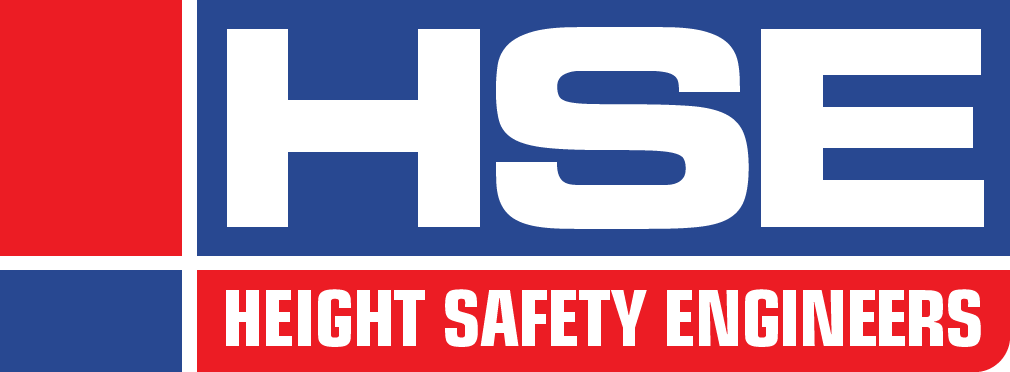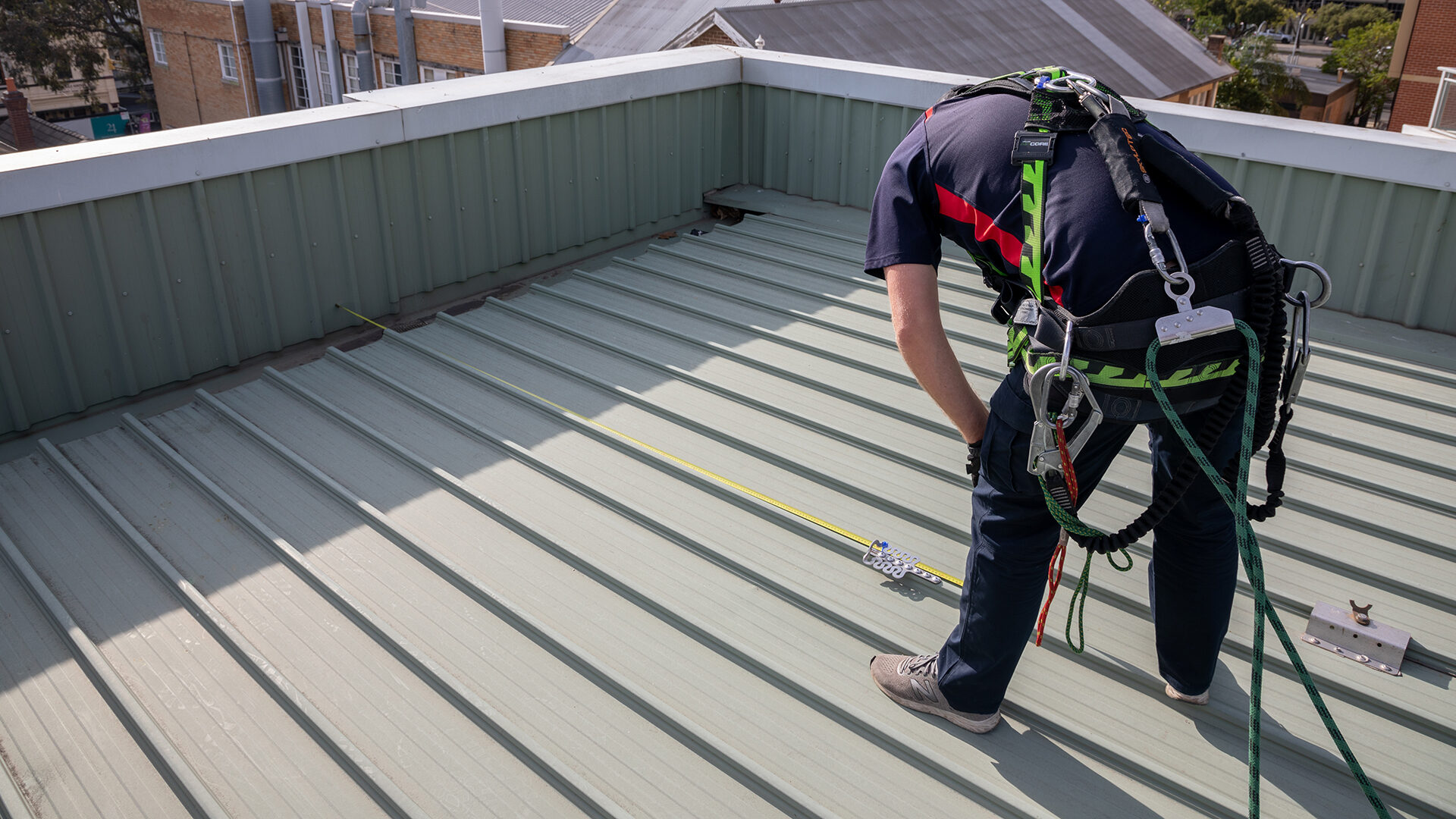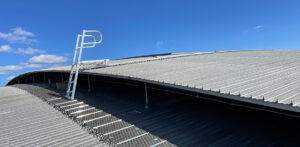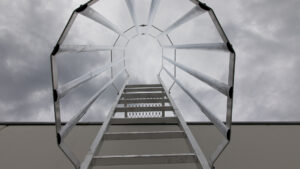Keeping your height safety system compliant is an important part of meeting a PCBUs safety obligations.
Safe access and fall protection systems are important for keeping workers safe when operating at heights and in areas where there is a risk of a fall. Just like any other tool or piece of equipment, they must be maintained to be kept in full working order.
Another important aspect of safety that persons conducting a business or undertaking (PCBU) should be aware of, is that having their height safety systems inspected regularly is part of meeting their workplace safety obligations.
Legislation and regulation
Identifying, managing, and mitigating the risks of a fall at a workplace is a process that brings together government legislation and regulation, Australian standards, and codes of practice. These documents all work together to provide comprehensive direction on how workplaces can be kept safe.
The Work Health and Safety Act is the legislation that governs workplace safety. Each state and territory have enacted their own version, but through coordination with Safe Work Australia, they are kept largely synchronised across jurisdictions. In NSW, where Height Safety Engineers is based, the specific law in force is the Work Health and Safety Act 2011.
The Act states that the PCBU is responsible for “the health and safety of—(a) workers engaged, or caused to be engaged by the person, and (b) workers whose activities in carrying out work are influenced or directed by the person, while the workers are at work in the business or undertaking”.
The legislation outlines how workplace health and safety is determined at a top level, including duties of care and the roles of each party within a safety process.
Paired with the Act, is the Work Health and Safety Regulation 2017.
The Regulation provides guidance on what sort of workplace safety risks need to be mitigated. For those working at heights, the Regulation states that PCBUs need to manage the risks to workers or other people that can result following a fall from one level to another.
The situations in which a fall could occur include “in or on an elevated workplace”, “in the vicinity of an opening”, “in the vicinity of an edge”, “on a surface through which a person could fall” as well as “any other place from which a person could fall”.
At this point, the question becomes how a PCBU goes about providing management of all these risks. The answer comes in the form of a code of practice.
Codes of practice and standards
Like the Work Health and Safety Act, the code of practice for managing the risks of falls at workplaces was developed by Work Safe Australia and then enacted through each state and territory’s workplace safety regulator. In NSW, this is SafeWork NSW.
The code provides guidance on how PCBUs can go about meeting their obligations under the Act and the Regulation. It provides details on processes and systems that can be used to mitigate fall risks.
In section 6 of the model code, it states that anchorage points should comply with AS1891.4, the Australian standard that relates to the selection, use and maintenance of industrial fall arrest systems.
It also tells PCBUs that height safety systems “must be inspected by a competent person…at regular intervals”. These inspections should be conducted in accordance with the system manufacturer’s instructions and the relevant standards, meaning AS1891.4.
So, what is AS1891.4?
Australian Standard 1891 is the standard for industrial fall arrest systems and devices. The “point four” bit relates to a sub-section within that standard, which in this case is the selection, use and maintenance of such devices.
Other parts of the standard relate to harnesses, lanyards, pole straps and more.
When it comes to compliance inspections for anchor points, it states that these should be completed in accordance with the manufacturer’s instructions, or annually if there are no recommendations.
To make life simpler for building owners, facility managers and others, the wider height safety industry has adopted annual inspections as the expected frequency for all fall protection systems. However, where systems are in harsh environments or are used on a frequent basis, a shorter period between inspections may be required.
AS1891.4 also says that these inspections should be completed by a “height safety equipment inspector”. This is defined as “a person who is competent in the skills needed to detect faults in height safety equipment and determine remedial action”.
Putting it all together
Having to adhere to the requirements of four different pieces of legislation and guidance can feel daunting. However, the Work Health and Safety Act, Regulation, code of practice and standards are designed to work together and complement each other.
Put briefly:
- The Work Health and Safety Act determines who has responsibility over safety.
- The Work Health and Safety Regulation outlines what risks need to be mitigated by those responsible for safety.
- The code of practice provides guidance on how these risks can be mitigated.
- AS1891.4 determines the level of quality for the mitigation to be adequate.
Would you like to know more?
There is more to height safety compliance than just understanding the governing documents.
If you would like to talk to our team, you can contact us on 1300 884 978, email enquiries@heightsafety.net or get in touch through our website.
